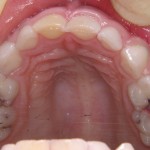
In primary teeth with exposed pulp as a result of caries of trauma pulpotomy is considered to be an effective vital pulp treatment. Clinical and radiographic success rates for pulpotomy are well established in studies and reviews. However, although a number of different techniques and medicaments are available their comparative efficacy is debatable.
The aim of this review was to compare the success rates of various pulpotomy medicaments or techniques, assess the methodological quality of reviews, and grade the level of evidence for each comparison.
Methods
A protocol was registered in the PROSPERO database. Searches were conducted in the Cochrane, Embase, LILACS, PubMed, Scopus, Web of Science, Google Scholar and OpenGrey databases. Systematic reviews assessing the overall clinical or radiographic efficacy of medicaments or techniques used for pulpotomy of primary teeth were considered. Two reviewers independently searched and selected studies and extracted data using a specifically develop proforma. Quality assessment was performed independently by two reviewers using AMSTAR-2 (A MeaSurement Tool to Assess systematic Reviews-2) and the ROBIS tool. An assessment of the overlap of the primary studies in reviews was undertaken.
Results
- 8 systematic reviews were included.
- 4 of the review registered an a priori The focus of 2 reviews was diode lasers, with mineral trioxide aggregate (MTA) ferric sulphate (FS), formocresol (FC), and Biodentine® (BD) being the focus of single reviews.
- One review focused on all types of vital pulp therapies, one on all medicaments.
- The quality of 3 reviews was assessed as high using AMSTAR-2, while one was considered of low quality and 4 of critically low quality.
- Risk of bias was assessed as high in five and low in 3 of the reviews using the ROBIS tool.
- The overall overlap of primary studies across the included reviews (calculated by dividing the total number of studies common to at least two reviews by the total number of studies and multiplying by 100) was considered to be moderate (45.73%).
- Meta-analyses were performed in 6 of the 8 reviews.
- Pulpotomy medicaments/techniques, except calcium hydroxide, had success rates of more than 80% for all domains and time periods.
- Most comparisons revealed no differences in the clinical, radiographic, or overall success rates.
- MTA was found to have better radiographic and overall success rates than calcium hydroxide at periods greater than 12 and 18 months.
- MTA also had better radiographic success rate than full-strength/1:5 diluted and full-strength formocresol at 24 months.
- Formocresol was found to have better overall success rates than calcium hydroxide at all time periods and better radiographic success rates at 12 months.
- Only 12 of the 63 comparisons had suggestive or weak evidence, whereas all others had either negligible evidence or insufficient data.
Conclusions
The authors concluded: –
The pulpotomy medicaments/techniques, except calcium hydroxide, showed success rates of more than 80%, whereas most comparisons revealed no differences. Mineral trioxide aggregate, however, was found to be better than calcium hydroxide and formocresol in several respects. This study highlights the lack of evidence regarding the choice of pulpotomy agents for the treatment of caries-affected primary teeth and elucidates the domains that require primary studies in the future. While two reviews focussed on all types of medicaments for vital pulp treatment the other 6 looked at more specific interventions.
Comments
A protocol for this overview of systematic reviews was registered with PROSPERO and broad database search undertaken which also included 3 major registries of systematic reviews. Of 62 full text papers assessed 8 systematic reviews were included 3 of which we have previously covered (Dental Elf – 23rd Nov 2018, Dental Elf – 8th Jun 2018, Dental Elf – 12th Dec 2012). Importantly the reviewers have assessed the degree of overlap of the primary studies as this can result in exaggerating the conclusions of the overview. With the exception of calcium hydroxide all the included pulpotomy medicaments/techniques demonstrated clinical or radiographic success rates of more than 80% for all domains and time periods. The reviewers also provide detail on various agents and techniques in their discussion. The authors also highlight challenges with the methodological quality of the primary research noting the need for additional randomised controlled trials with greater uniformity of sampling, case selection and treatment protocols and follow up. Common outcome sets would also be beneficial as would closer adherence to SPIRIT and CONSORT guidelines.
Links
Primary Paper
Tewari N, Goel S, Mathur VP, O’Connell AC, Johnson RM, Rahul M, Sultan F, Goswami M, Srivastav S, Ritwik P. Success of medicaments and techniques for pulpotomy of primary teeth: An overview of systematic reviews. Int J Paediatr Dent. 2022 Mar 10. doi: 10.1111/ipd.12963. Epub ahead of print. PMID: 35271753.
Other references
Dental Elf – 23rd Nov 2018
Dental Elf – 8th Jun 2018
Dental Elf – 27th Feb 2014
Dental Elf – 12th Dec 2012
Only weak evidence that laser-assisted pulpotomy improves outcomes in primary teeth
